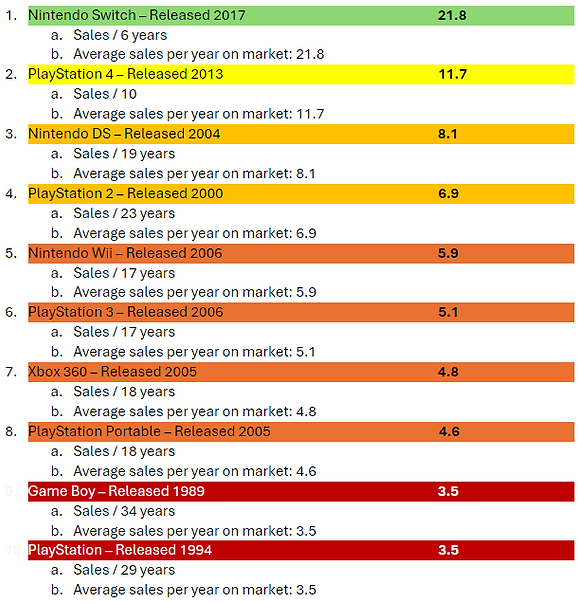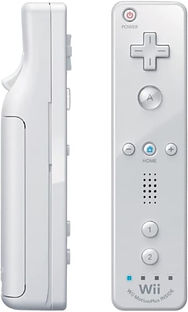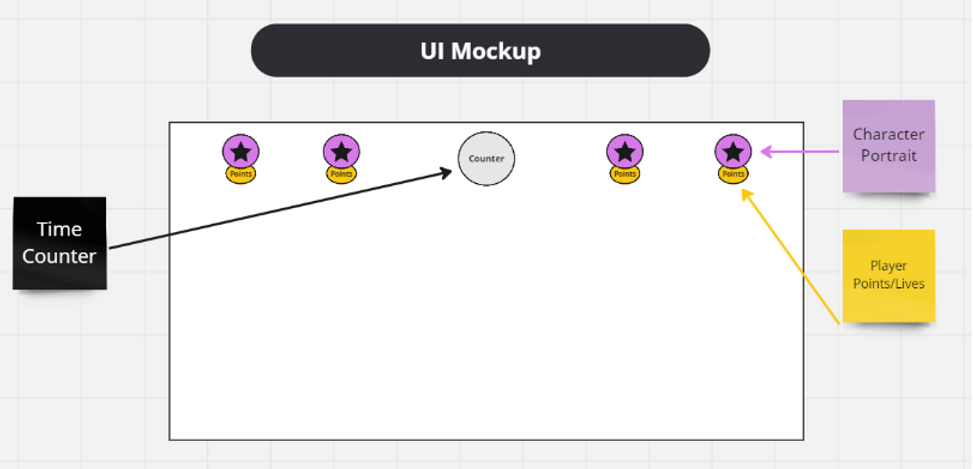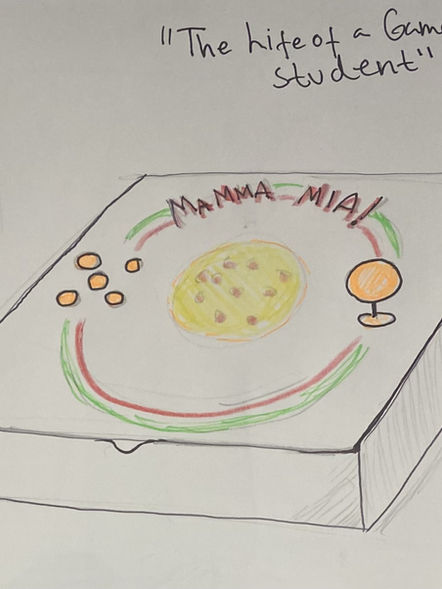Life of a Game Dev Student
The game is set in the depths of space – an intergalactic where four players take on the roles of adventurous astronauts who travel and take on challenges. These are party games they play together by use their tailored motion tracking controllers.
All assets by quaternius (https://quaternius.com/)

The project is called Life of a Game Dev Student – it is a party game intended for four players using a motion tracking controller. The game is set in space and the players participate in different challenges in the form of games against each other. The controller uses a MPU6050 to track acceleration and rotation – we wanted it to ideally work similarly to a Wii controller but without the buttons and trigger.
This page covers my own contribution towards this pair project I made together with Joseph Ballard.

About the Assignment
An Experimental Games Production project
01
Assignment Brief
This game was made as an assignment for a partner project in the module Experimental Games Production at Staffordshire University.
The brief was about developing a portfolio-ready experimental game; this game should have an innovative kind of interaction.
03
Goals
02
A Partner Project
I paired up together with Joseph Ballard and the two of us began to come up with ideas for our assignment. While I have more of an artistic background, Joseph has a strong foundation in games design and an interest for production. We had a feeling that our different skill sets would compliment each other, meaning we could approach the task with different opinions and solutions to things.
We agreed early on that we wanted to create a game that was either comedic or scary. We also wanted to make a game that our peers could find amusing towards the end of the module.
Brainstorming
During week 1 we brainstormed a couple ideas together for our assessment. Joey came up with good inspirations for the first two, while the third was a combination of strange ideas that we combined.
Echo Game
Ball-Controller Game
Hamsters and Chairs
Echolocation based input to reveal surroundings during gameplay
Ball-based controller to ie. move the player
Arcade-gunner using silly controls
For the second game concept I decided to create a moodboard of different ball types, thinking it could help to brainstorm things that could either inspire gameplay or strange controller components. I also sketched out some strange controller boards on paper as part of the brainstorming.
The second week, we came up with a new game concept which we agreed to continue developing as our assessment project. We decided to call this project “Life of a Game Dev Student”.
The initial inspiration for this game concept was a project we saw at the Leftfield Collection at EGX 2023 called “Means of Play” by Richard Sherriff. Sherriff’s project had three core components; an old screen, a book that had been made into a controller, and a box that the user could adjust the screen’s visuals with. Joseph was the one that brought up Sherriff’s project and how he was intrigued by the way Sheriff used a book as a controller. We agreed to explore this as a controller inspiration. Sherriff had used the book “Rules of Play” (2003) by Salen and Zimmerman. We wanted to consider alternative forms besides books too, which led me to suggest a pizza box.
Life of a Game Dev Student
About
Joseph agreed that a pizza box was a fun take on it, and said “It’s the core to game dev.” From there on we discussed how the gameplay could be fun, chaotic, comedic takes on aspects of a game dev student’s life. Joseph suggested adding an energy drink controller that could be shaken. We then had three controller ideas, to add to the chaos – the book, the pizza box, and the energy drink can. I sketched out these and noted down notes and ideas as we shaped the idea together.
Joseph suggested that mini games could be a fitting genre for the concept. We also discussed if we wanted the concept to be solo- or multiplayer, but agreed to figure this out as we brainstormed mini games and prototypes of gameplay. Joseph pointed out that if we did end up making the concept into multiplayer, we could have the energy drinks be controllers. I quickly put together a moodboard and digital photo bash of the pizza box controller.

Controller
I took care of the development of the controller from research to design to implementation, although Joey was the one that did research on the hardware and ordered the MPU6050. Joseph also offered opinions, tutorials, and help with issues throughout the module.
Research
Since I was in charge of designing and programming the controller, I was also in charge of research on controllers. We had agreed that we were going to use an MPU for the controller, so I researched controllers that have motion sensors in them. I also performed research on which controllers are most popular throughout the ages and did some research on some of these controllers too. This information is noted down below and is also accessible in its own dedicated Word document (Controller Inspiration Document).
The top 10 consoles according to lifetime sales
According to Statista, the top 10 consoles (lifetime sales) are in the following order as of 2023:

Based on this list, the following companies can be ranked on how often their devices are mentioned in the top rankings:

It is worth to consider total sales versus lifetime of the consoles in this list as well, since these consoles have been on the market for different amounts of time. This is what will be defined as the “product score” from here on:

It is worth to consider total sales versus lifetime of the consoles in this list as well, since these consoles have been on the market for different amounts of time. This is what will be defined as the “product score” from here on:
Links to statistics:
https://www.statista.com/statistics/1101872/unit-sales-video-game-consoles/
https://www.statista.com/statistics/276768/global-unit-sales-of-video-game-consoles/
https://www.statista.com/outlook/cmo/consumer-electronics/gaming-equipment/worldwide#volume

The Switch and Joy-Con
The Joy-Cons can either be used together, similarly to the classic console controller, or separately as two individual controllers. This allows players to play multiplayer games with two or more Joy-Cons. The Joy-Cons can have wrist straps attached to them, so that the player doesn’t accidentally drop them.
In the pair of Joy-Cons, each controller has similar designs with a flipped placement of the thumbstick and set of four buttons. Additionally, the Joy-Con has a button at its top (minus/plus) and a button at its bottom (square/circle). At its top and back, the Joy-Con has a button following along the edge which they call the L/R Button and the ZL/ZR Button. Additional buttons become visible when the Joy-Con is not attached to the Switch screen, but these are currently of less interest for our project.
The Joy-Con is interesting to break down since it boils down the necessary controls to the essentials. Despite this the controller offers a lot of control and different kinds of inputs. The thumbsticks offer smooth axis-based control while the set of four buttons fit well with more precise commands and actions. The positioning of these core elements feels natural and comfortable for the thumbs of the player and are easily within reach. L/R and ZL/ZR buttons also open up more possibilities for precise commands even if they are a bit out of the way, and by being close to each other means they are grouped together making it feel natural to use them together.

The Nintendo DS
The Nintendo DS has two screens, one of which was interactable with the stylus, and this offered both a lot of screen space as well additional gameplay with the stylus.
The Nintendo DS buttons are placed on the sides of the controller and at the back corners. The left side of the controller has a four-directional d-pad while the right side has four separate buttons. There are slight differences between the original Nintendo DS and the Nintendo DS Lite version – such as the placements of the power, start, and select buttons. These have been moved down to the bottom of the control and have been made smaller on the Lite.
It is worth noting that the changes in size and placements of buttons on the Lite creates a different grouping and focus than in the original – the player will focus less on the three small buttons when they are so far away from the two main groupings of buttons and d-pads. It is also worth pointing out that when the player holds the Nintendo DS in their hands their thumbs naturally rest on these two main groupings, while their index fingers rest on the back corner buttons.


The Nintendo Wii
The Wii Remote is meant to be held in a hand with a strap around the wrist. The controller registers movement and passes this to the console. The Wii games centres their gameplay around this feature. The controller has few buttons. The Wii Remote Plus has since swapped out the original; this remote has more complex motion tracking.
The controller has a D-pad at the top and a big button beneath it. These form the main group where the thumb rests naturally. Beneath this core group are three more buttons; minus, home, and plus. At the bottom of the controller are two more buttons numbered one and two. At the controller’s back is a trigger which the index finger naturally rests on.
PlayStation 2
The PlayStation 2 controller is made of hard plastic with soft plastic thumbsticks. Overall, the ergonomical design of the controller makes it comfortable to hold for extended time periods. It has a cable which needs to be connected to the console for it to work.
The PlayStation 2 controller has buttons both on its top surface and towards the back. Its core groups are the left and right thumbsticks where the thumbs naturally rest when the player holds the controller. Closely located to these two are the D-pad to the left side and the four buttons on the right side. These are easy to reach with the respective thumb. The less used buttons, which usually are not used for the gameplay loop, are in the centre between these areas. The handles on each side would be held with the middle, ring, and little finger. The index fingers would be resting naturally towards the back of the controller where the two pairs of triggers are located.


Programming
I took care of the programming for the controller, both with the Arduino and within Unreal. In the end though, we ended up using Adam’s provided code for reading and sending the MPU6050’s values and Joey ended up providing a much simpler solution to the controller programming within the Unreal blueprint.
Blue comment boxes within Unreal blueprints represent code that functions and is in use, while dark purple boxes represent broken code that is not in use.
Prototyping
I overcomplicated the prototyping stage, and although I was making progress, Joseph had a much easier and straight-to-the-point solution.
My video is included on the side together with a separate document that contains all of the code - this document can be accessed freely, I just did not want to overfill this page too much.
The code to the right here is Joseph's solution, which compares the raw acceleration data to a defined threshold; if the acceleration goes above said threshold, a jump is triggered.

Level design & decoration
For each map I designed and decorated levels based on the game mechanics Joey developed; we discussed throughout the process what the mechanics would be like and what mood and setting the levels would need, and I shaped the levels with this in mind. I also added some juice to the levels so that planets and objects would spin.
Maps
UI Planning
Being the one more experienced with UI design and widgets in Unreal, I created a simple UI setup and layout for the project. I chose to go simplistic with it since our priorities in the project lay elsewhere. I also noted from the mini-game research we did that a lot of efficient UI design is straight to the point with its information – that's why I focused on including essential information such as points/lives and time counters. I also chose to add character portraits to reduce the amount of things that needed to be read, in hope that registering an image would be quicker than a username. This would also make it easier for us on the developer’s end, since finding a comfortable way of typing in text would be difficult with the controller’s design unless a keyboard was used on the side.
















